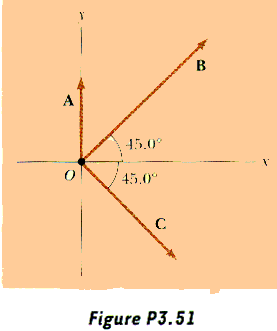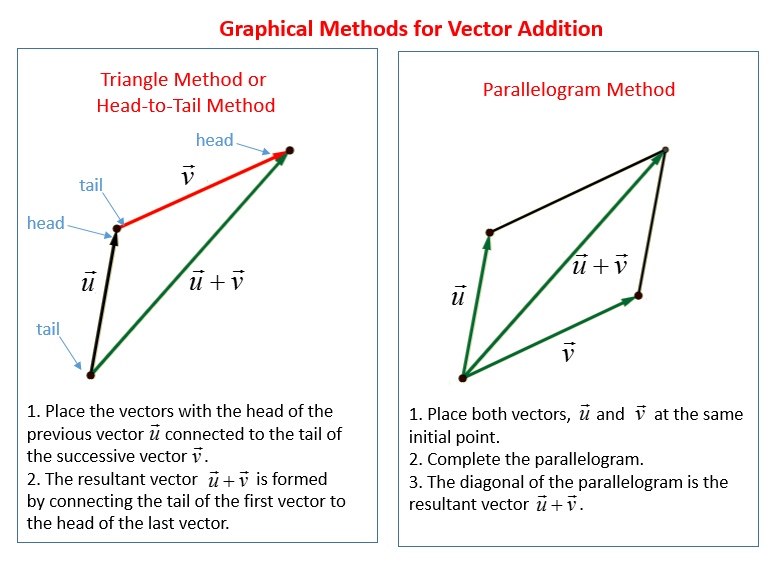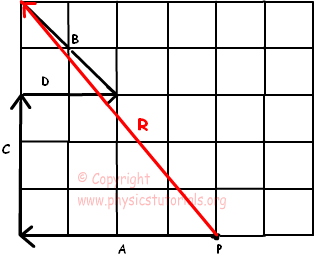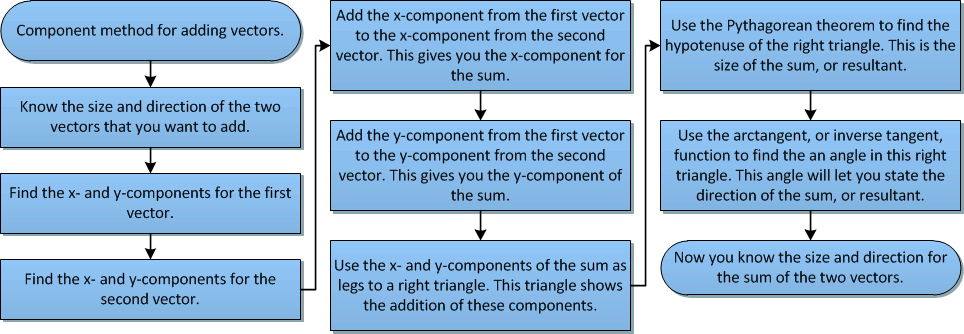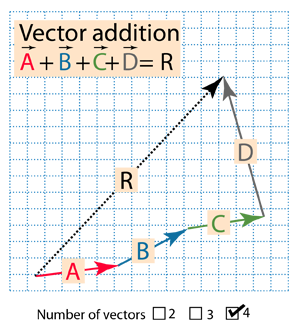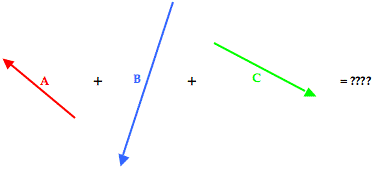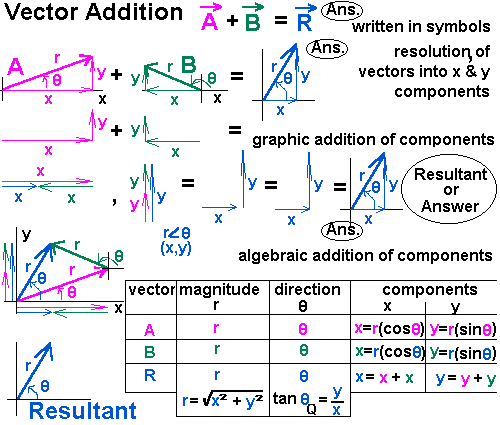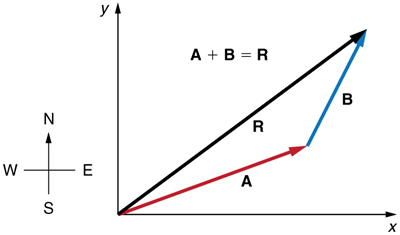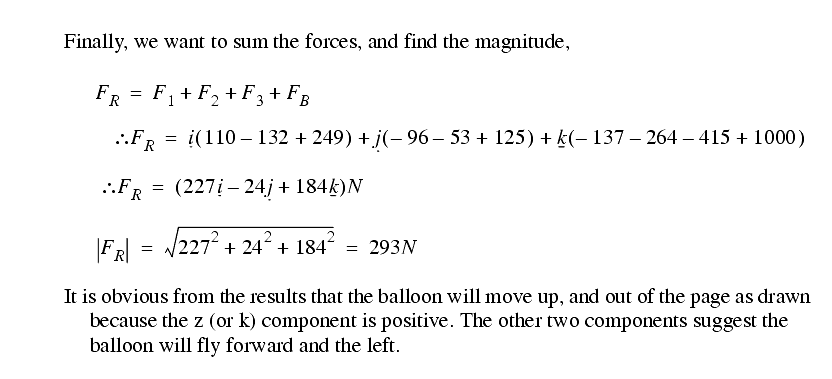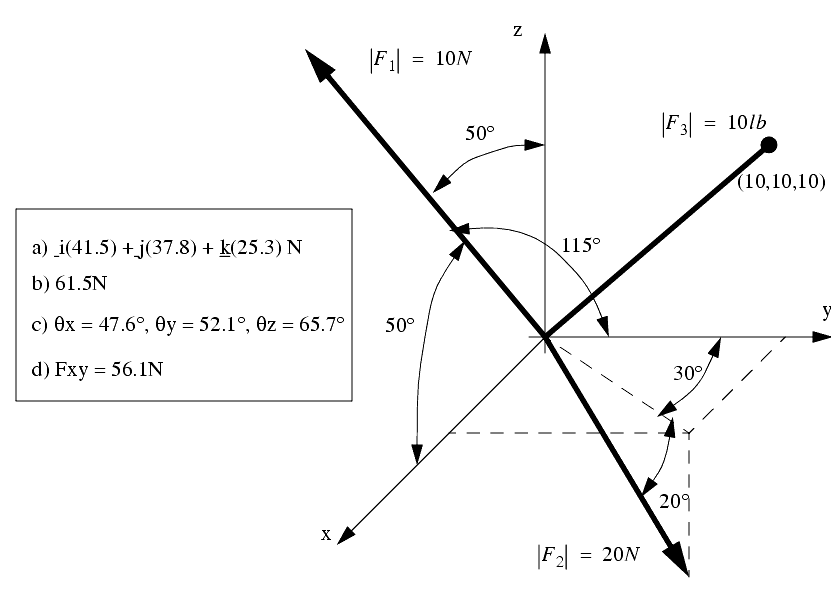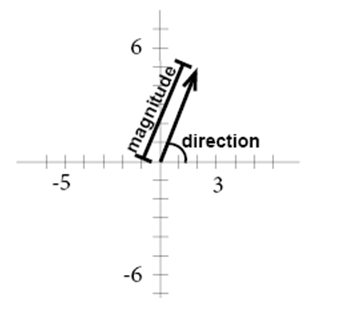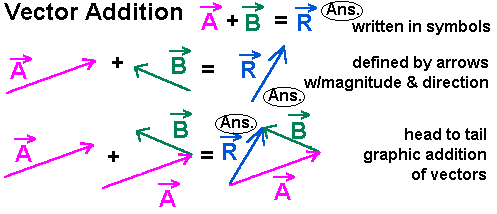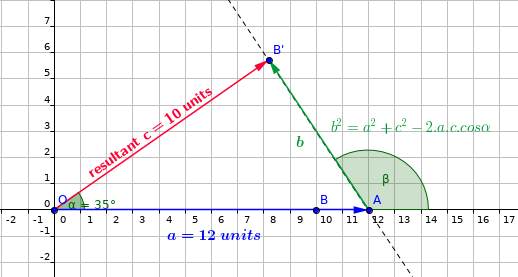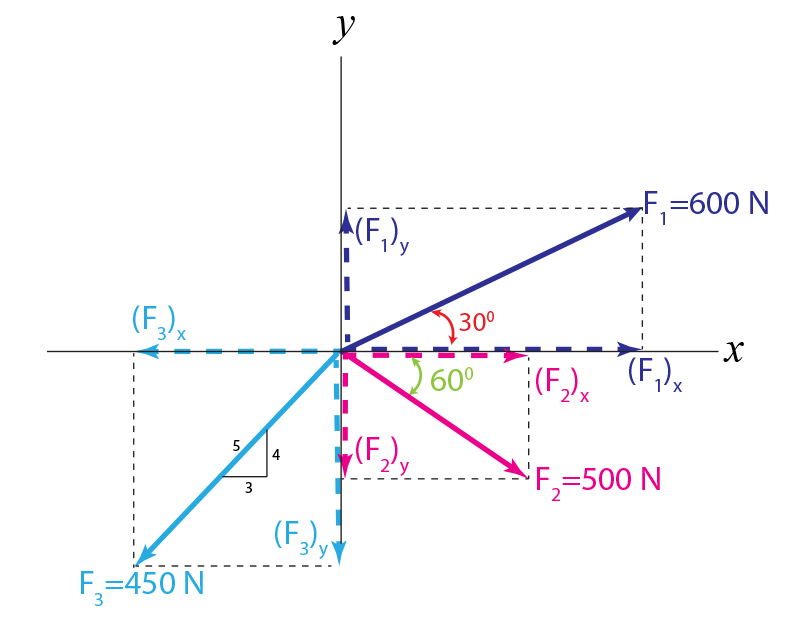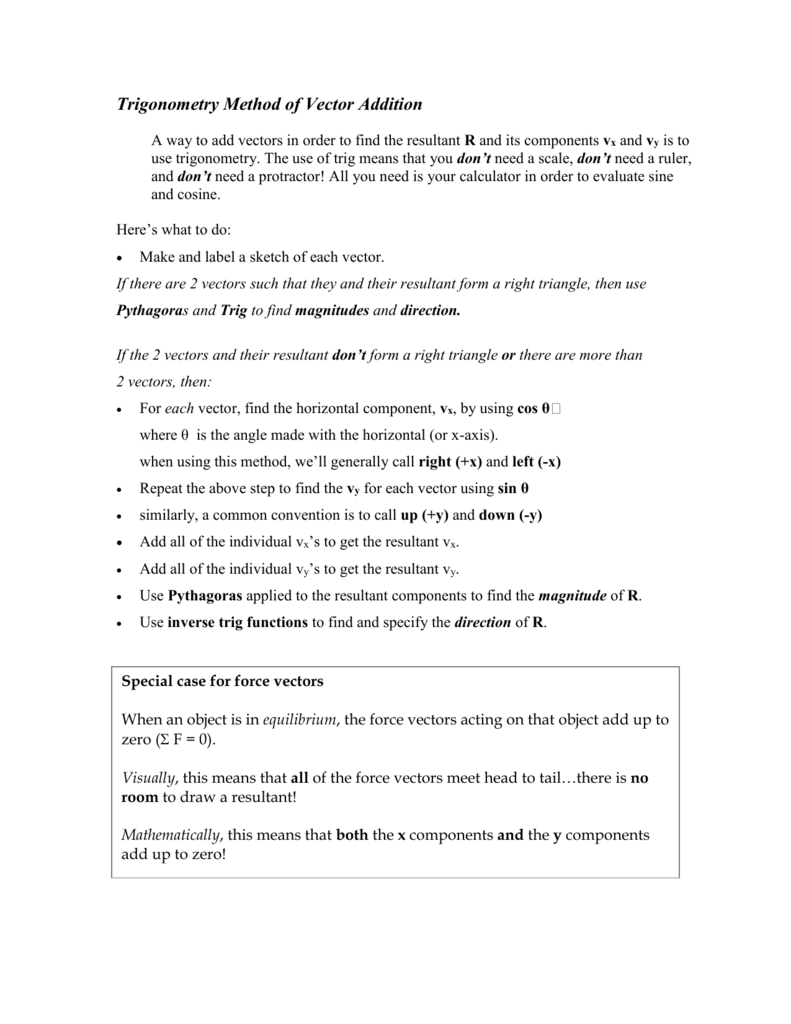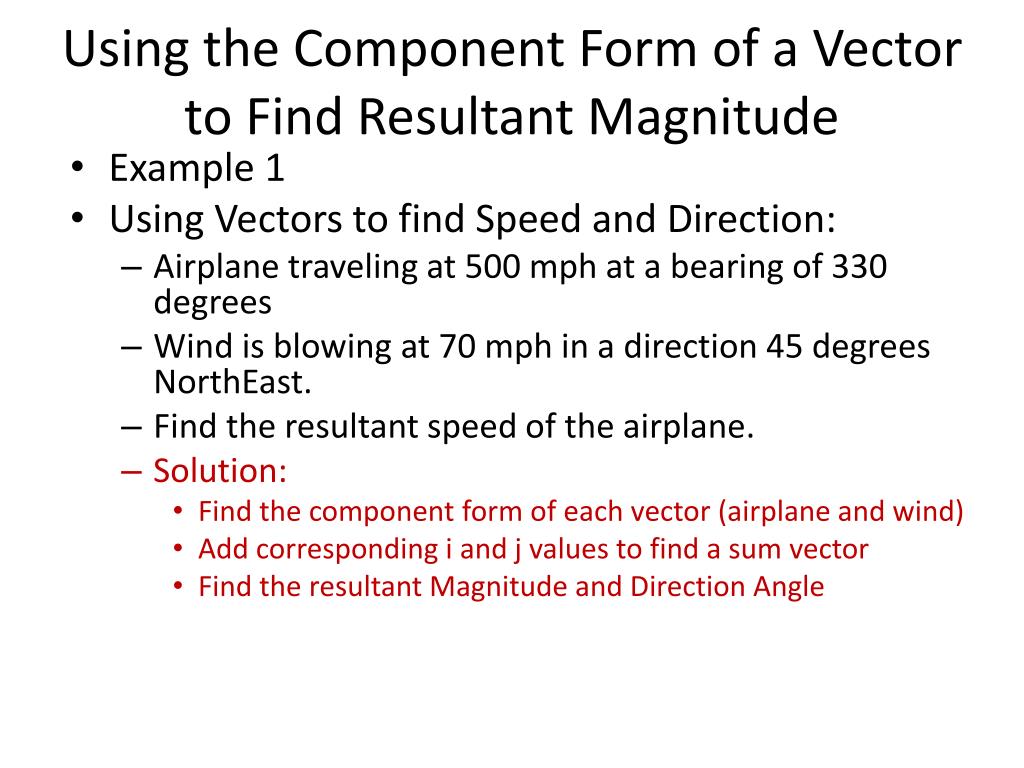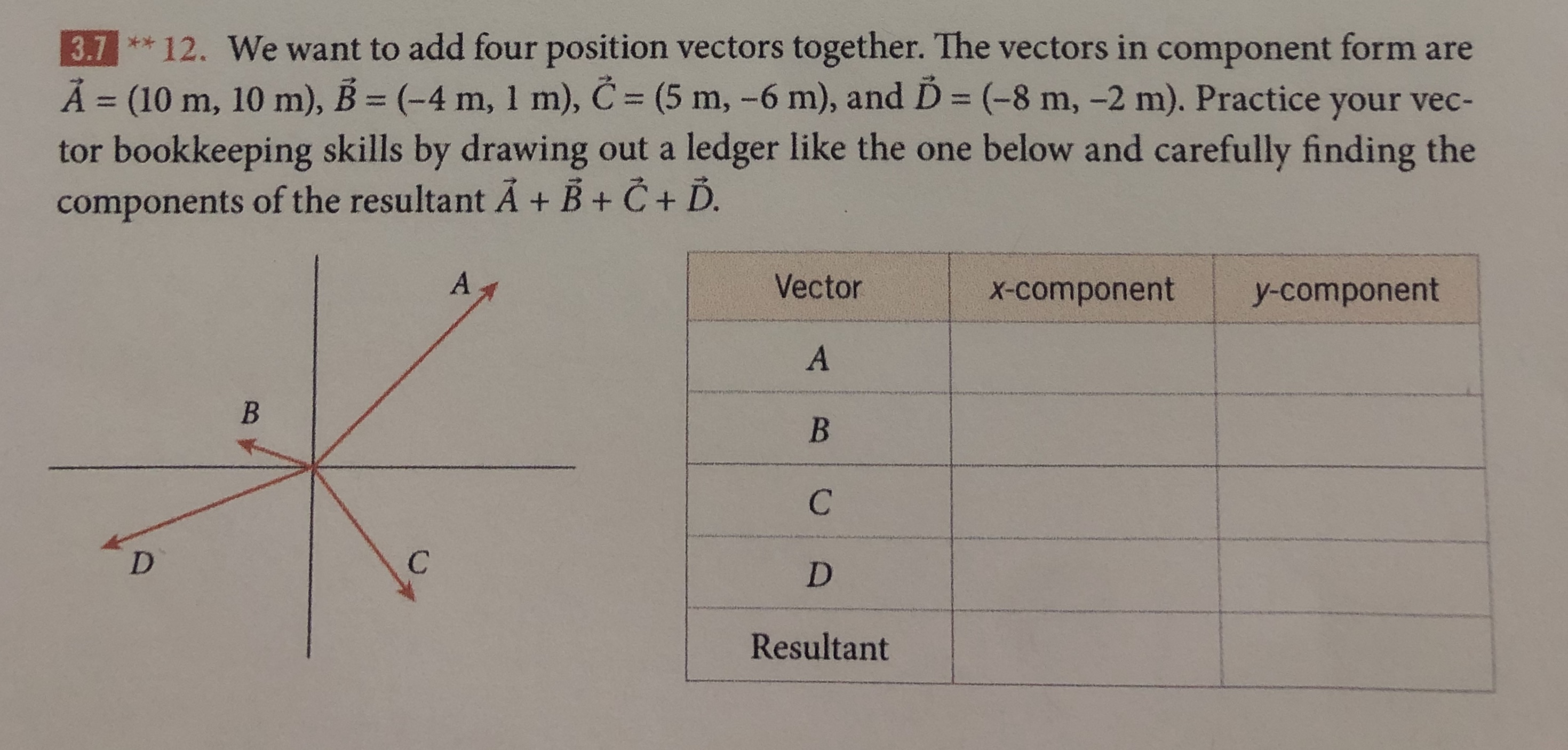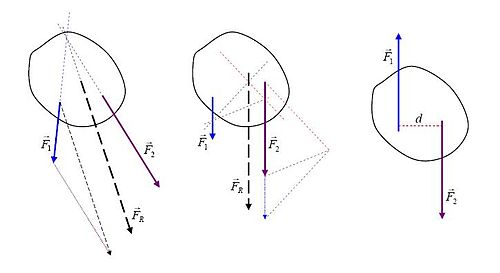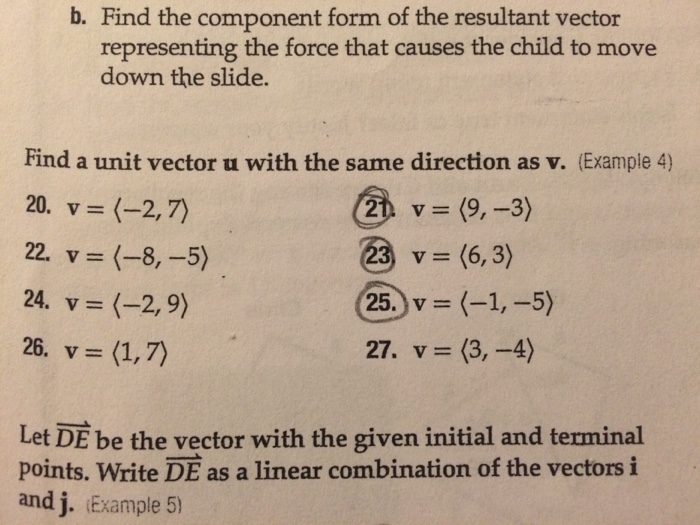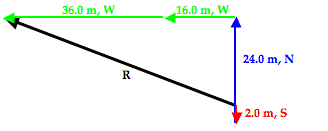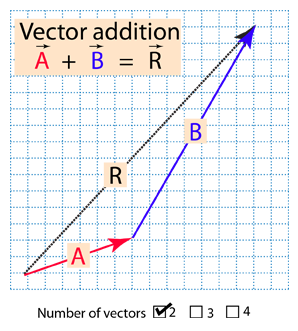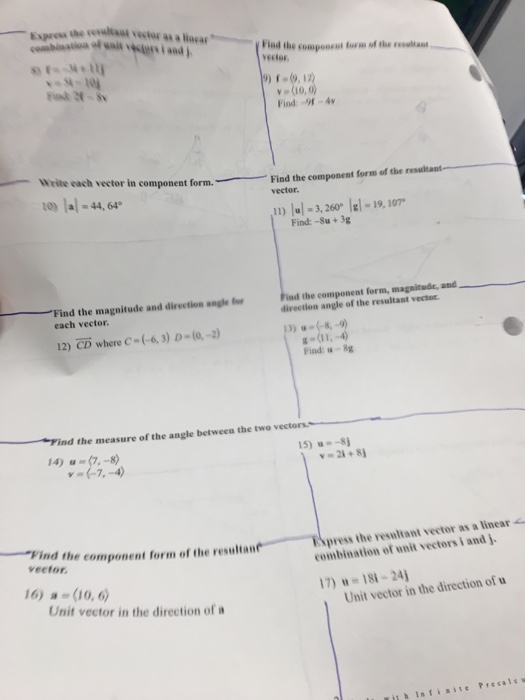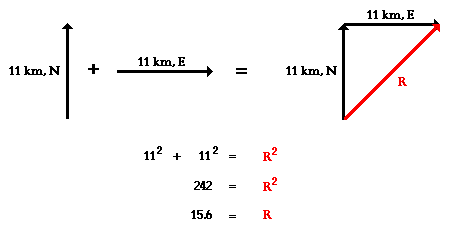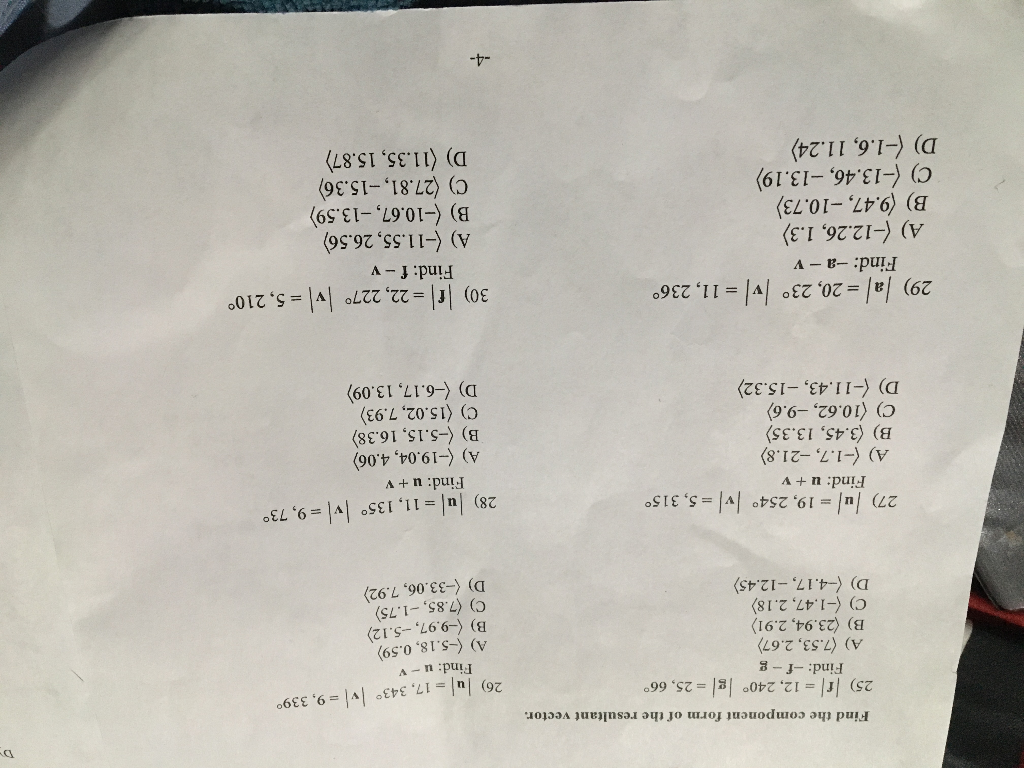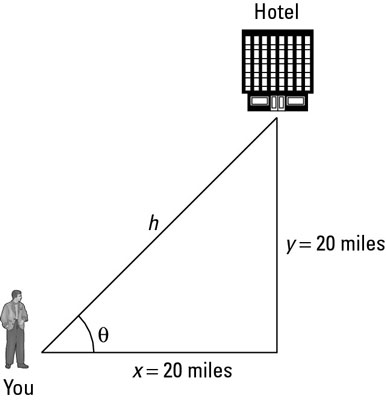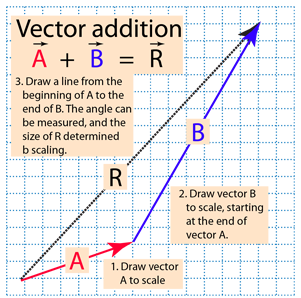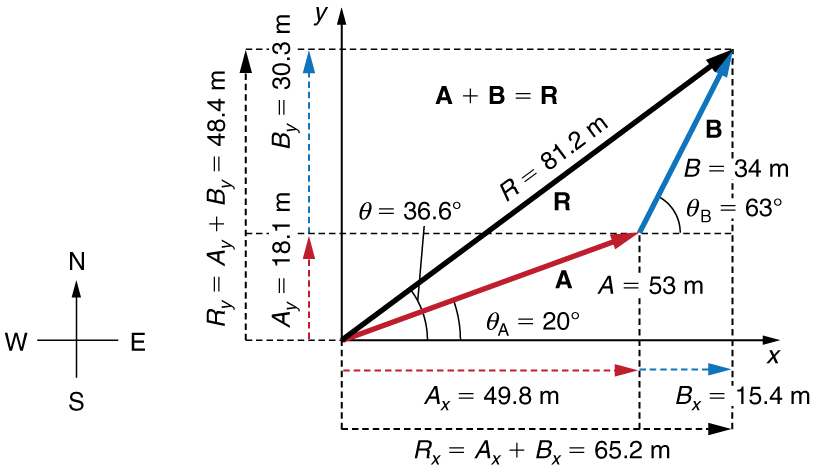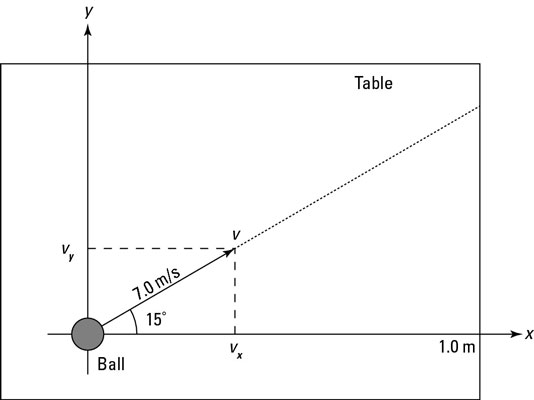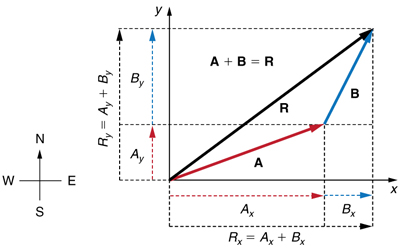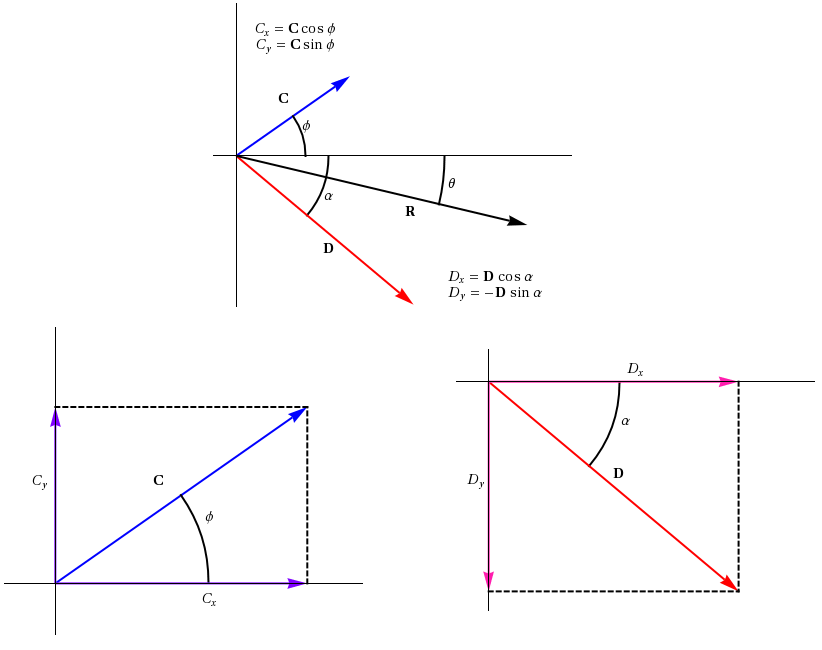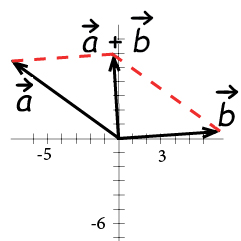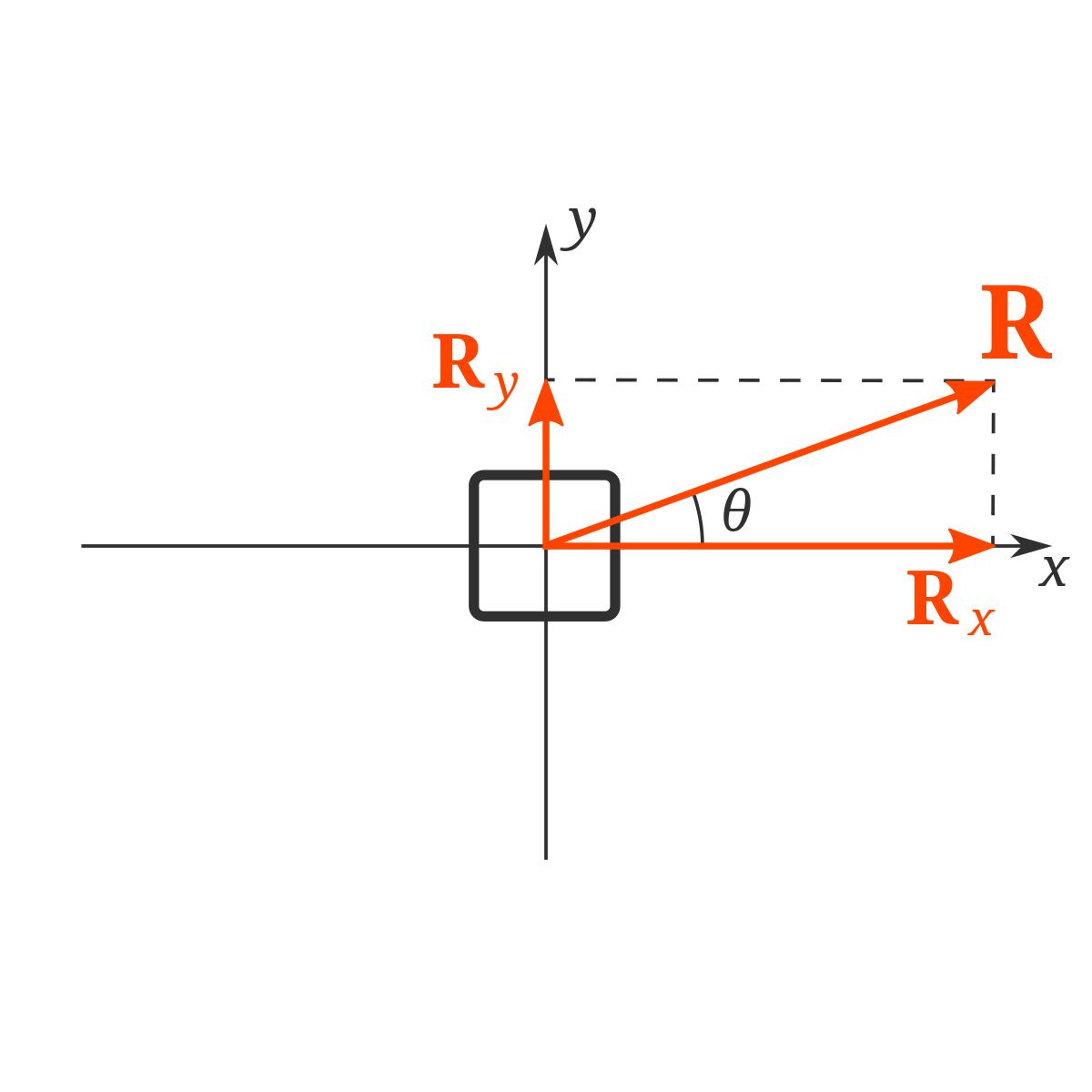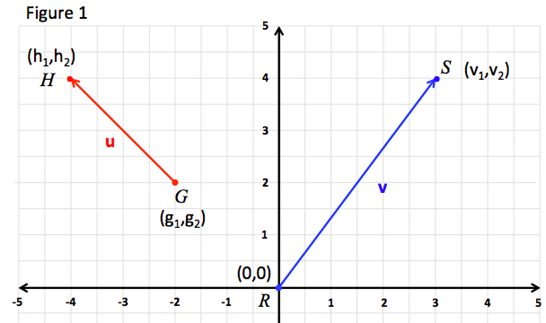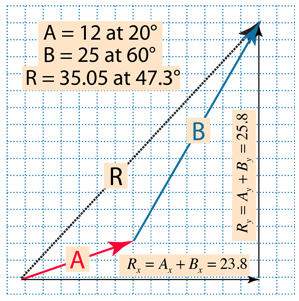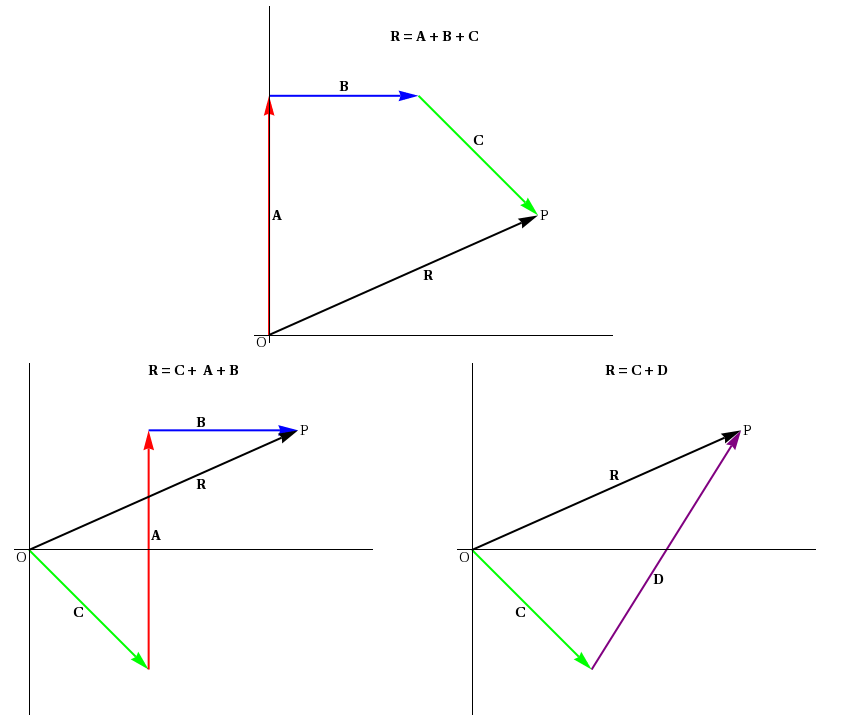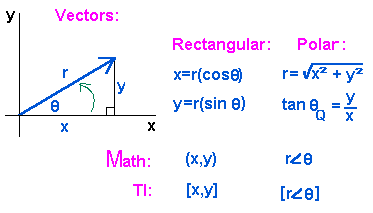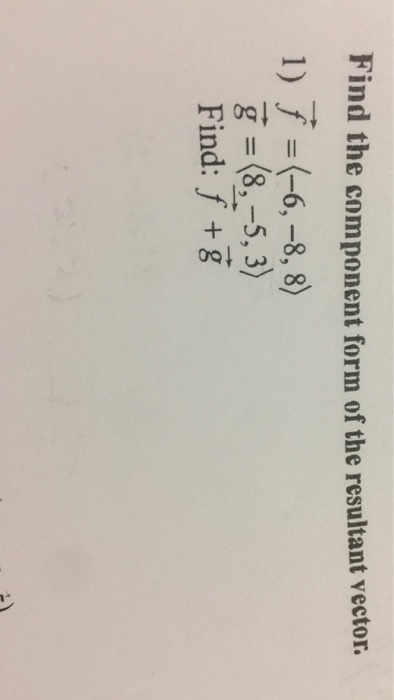How To Find Resultant Vector In Component Form
Multiple vectors may be added together to produce a resultant vector.

How to find resultant vector in component form. You can use the pythagorean theorem x2 y2 h2 solved for h. The direction component indicates the vector is directed from one location to another. Find the component form of with initial point. You have to find the components yourself using a little trigonometry.
The tail of the vector is where the vector begins. A 1 3 and terminal point. In physics when you break a vector into its parts those parts are called its componentsfor example in the vector 4 1 the x axis horizontal component is 4 and the y axis vertical component is 1typically a physics problem gives you an angle and a magnitude to define a vector. Calculate the components of the resultant vector of 2u 3v.
Once done a little thinking is required in order to relate the angle to a direction. Express a vector in component form. Find the components of 2u and 3v. Vector v in figure 1 has an initial point at the origin 00 and is said to be in standard position.
Since the resultant is the hypotenuse of a right triangle this can be accomplished by first finding an angle that the resultant makes with one of the nearby axes of the triangle. To find the vector in component form given the initial and terminal points simply subtract the initial point from the terminal point. A vector in standard position can be represented by the coordinates of its terminal point. By steven holzner.
If you know a vectors vertical and horizontal components finding the vectors magnitude isnt so hard because you just need to find the hypotenuse of a right triangle. The head to tail method considers the head of a vector to be the end with the arrow or the pointy end. The magnitude is a measurement of the size of the vector. Just make sure you add and subtract the horizontal and vertical components separately in each step.
These are pretty straightforward computations. Vectors are often represented in component form. Thus v in component form v 1 v 2. The head to tail method is way to find the resultant vector.
Addition of non perpendicular vectors. The steps are quite straight forward.


